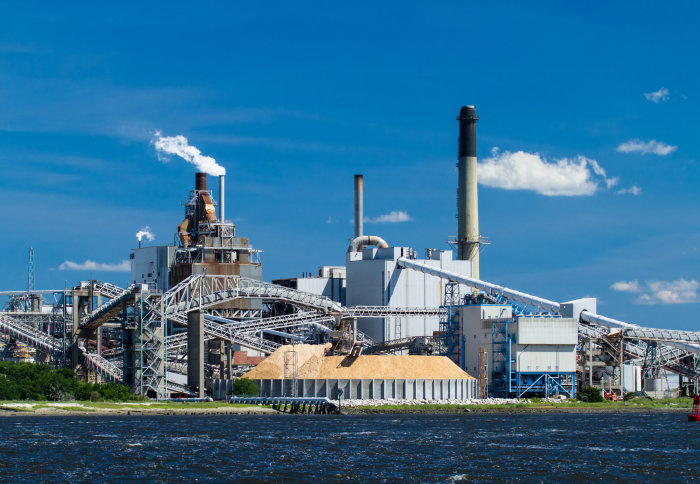Greener energy generation alone will not help us reach climate goals

Transport, buildings and industry need to start using lower carbon sources of energy now if we are to avoid the worst impacts of climate change.
Transporting goods, heating buildings and manufacturing products all rely on fossil fuels. Without serious change now in these sectors, we will be ‘locked in’ to increased carbon dioxide (CO2) emissions for decades, say the authors of a new report.
The Paris Agreement, adopted in 2015, sets a target for global warming of well below 2°C, and potentially 1.5°C, to avoid the worst impacts of climate change. Many of the current plans to reach this goal revolve around making energy generation greener, for example by replacing coal and natural gas-fired power plants with wind and solar power.
Green energy alone not enough
However the new study, published today in Nature Climate Change and featuring Imperial College London researchers, shows cleaning up energy supply alone will not be enough on its own to reach the Paris Agreement goals. Instead, CO2 savings will also need to be made in the industry, transport and building sectors.
“Our study shows that even if we start being serious about emissions reductions today, about 25 years’ worth of today's emissions are still expected to be produced by the accumulated industrial, transport and building infrastructure of the world.” Dr Joeri Rogeli Grantham Institute - Climate Change and the Environment
For example, transport relies on the internal combustion engine, which burns fossil fuels like petrol. Electric car engines could reduce the CO2 emissions from personal cars and road transport, but the same types of engines will not be able to replace the engines used in shipping or aviation.
Without efforts in these sectors, say the authors, we will have to rely more heavily on removal technologies that extract CO2 from the atmosphere, which are uncertain and unproven on a large scale.
Co-author of the study Dr Joeri Rogelj, from the Grantham Institute – Climate Change and Environment at Imperial, said: “Ensuring that global warming is kept within safe bounds requires us to stop emitting carbon dioxide into the atmosphere. Nobody expects this to happen overnight, but decisions made today matter much longer than often appreciated.”
'Residual' CO2 emissions
Infrastructure that relies on carbon-based energy, such as the production of concrete and the majority of freight transport, is often built to last for decades. This means that unless concerted efforts are made to change these systems now, they will continue to emit carbon dioxide far in the future. These ‘residual’ CO2 emissions make a big difference in future predictions.
The Paris targets of keeping global warming well below 2°C means there is a limited remaining ‘budget’ for how much CO2 we can release, ever. For example, to keep global warming to just 1.5°C, several studies suggest we may only be allowed to emit as little as 200 Gigatons of CO2, which is in stark contrast to the 4000 Gigatons of CO2 that would be emitted if current trends continue.
Uncertain and potentially risky technologies
This has given rise to concerns about the increasing reliance on uncertain and potentially risky technologies for so-called negative CO2 emissions, such as bioenergy plantations or carbon capture and storage (CCS).
Working within different carbon budgets, the team modelled scenarios of policy action on climate change to determine how the targets may be met.
Lead author of the study Dr Gunnar Luderer, from the Potsdam Institute for Climate Impact Research in Germany, said: “We found that even with enormous efforts by all countries, our calculations show that residual fossil carbon emissions will remain at about 1000 Gigatons of CO2.”
“This seems to be a lower end of what can be achieved with even the most stringent climate policies, because much of the residual emissions are already locked into the system due to existing infrastructures and dependencies on fossil fuels.”
Ramping up ambitions
The team found that to aim for the ambitious 1.5°C target for 2100 would mean that at least 600 Gigatons of CO2 removal would be required under the assumptions of their study, although other recent research to which Imperial College London researchers contributed shows this can also be a lot less.
Co-author Dr Elmar Kriegler, from the Potsdam Institute for Climate Impact Research, said: “While it may still be difficult to determine the exact remaining CO2 budget for 1.5°C, one thing is very clear: ambitions to reduce fossil fuel emissions have to be ramped up substantially and soon to keep doors open to meet the Paris targets.”
The research leading to these results has received funding from the European Union’s Seventh Programme FP7/2007-2013 under grant agreement no. 308329 (ADVANCE) aswell as the Horizon 2020 Research and Innovation Programme under grant agreement no. 642147 (CD-LINKS).
Article text (excluding photos or graphics) © Imperial College London.
Photos and graphics subject to third party copyright used with permission or © Imperial College London.
Reporter
Hayley Dunning
Communications Division